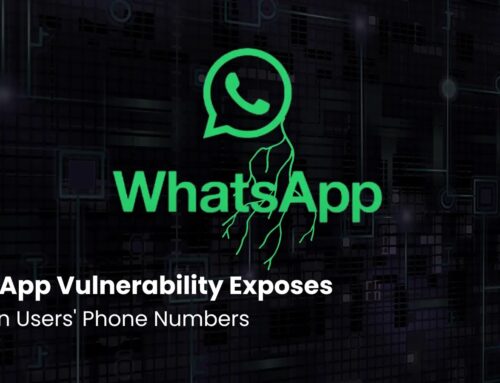
Princeton University Data Breach – Database with Donor Info Compromised
Princeton University Data Breach: Donor Database Compromise Exposes Sensitive Information
The digital landscape often finds itself grappling with sophisticated threats, and even institutions renowned for their intellectual prowess are not immune. On November 10, 2025, Princeton University experienced a significant security incident when external attackers successfully breached a database managed by its University Advancement department. This compromise, though swiftly contained, exposed a trove of sensitive personal information belonging to various members of the university community, highlighting the persistent challenges in safeguarding digital assets.
The Anatomy of the Attack: Unauthorized Access and Data Exposure
The incident involved unauthorized access to a critical database, a repository for personal details of alumni, donors, faculty members, students, parents, and other individuals associated with Princeton University. While the exact methodology leading to the initial infiltration has not been publicly detailed, the rapid detection and response by the university’s security teams limited the breach duration to less than 24 hours. However, even this brief window was sufficient for the attackers to gain access to, and potentially exfiltrate, sensitive information.
Data Compromised: A Broad Spectrum of Personal Information
The compromised database housed a comprehensive range of personal data. For a University Advancement department, this typically includes, but is not limited to:
- Full Names: Essential for identification.
- Contact Information: Addresses, phone numbers, and email addresses.
- Alumni Status and Graduation Years: Pertaining to educational history.
- Giving History and Donor Information: Financial contributions and related details.
- Affiliation Details: Such as faculty department, student enrollment status, or parent relation.
The exposure of such a diverse set of personal data carries significant risks, ranging from targeted phishing attempts and identity theft to reputational damage for the individuals affected.
The Critical Importance of Donor Data Security
Donor databases, like the one compromised at Princeton, are particularly attractive targets for cybercriminals. They often contain not only personal identifiers but also financial histories and estimations of wealth, making the individuals listed prime targets for social engineering schemes, spear-phishing attacks, or even more sophisticated financial fraud. Protecting this information is paramount not only for the privacy of individuals but also for maintaining trust and the integrity of philanthropic efforts.
Mitigation and Response: Princeton’s Swift Action
The swift detection and containment of the breach by Princeton University’s security teams underscore the importance of robust incident response capabilities. Limiting the breach to under 24 hours suggests effective monitoring, alert systems, and a well-practiced response plan. While public information about specific remediation steps is limited, standard protocols after such an incident would involve:
- Secure the Compromised System: Isolating the affected database and patching any identified vulnerabilities.
- Forensic Analysis: Investigating the root cause of the breach, identifying the entry point, and determining the extent of data accessed.
- Notification Protocols: Informing affected individuals and relevant regulatory bodies, as mandated by data protection laws.
- Enhanced Security Measures: Reviewing and upgrading existing security infrastructure, including access controls, encryption, and intrusion detection systems.
- User Awareness Training: Reinforcing best practices for password hygiene and recognizing phishing attempts among faculty and staff.
Lessons Learned: Proactive Cybersecurity Posture
This incident at Princeton University serves as a stark reminder that no organization, regardless of its resources or reputation, is impervious to cyber threats. A proactive and adaptive cybersecurity posture is crucial. This includes:
- Regular Security Audits and Penetration Testing: Identifying vulnerabilities before malicious actors exploit them.
- Robust Access Controls: Implementing the principle of least privilege, ensuring only authorized personnel have access to sensitive data.
- Data Encryption: Encrypting sensitive data at rest and in transit to render it unusable if accessed without authorization.
- Employee Training and Awareness: Educating staff about common cyber threats and safe computing practices.
- Comprehensive Incident Response Planning: Developing and regularly testing a detailed plan for responding to security incidents.
- Multi-Factor Authentication (MFA): Implementing MFA on all critical systems to add an extra layer of security against unauthorized access.
Expert Recommendations for Data Security
For institutions holding sensitive personal and financial data, a multi-layered security strategy is non-negotiable. This involves not only technological solutions but also a strong security culture. Organizations should consider:
- Zero Trust Architecture: Assuming no user or device is trustworthy by default, regardless of their location inside or outside the network.
- Threat Intelligence Integration: Utilizing up-to-date threat intelligence to anticipate and defend against emerging attack vectors.
- Automated Security Tools: Implementing Security Information and Event Management (SIEM) systems and Endpoint Detection and Response (EDR) solutions for continuous monitoring and rapid threat detection.
Conclusion
The Princeton University data breach underscores the persistent and evolving nature of cyber threats. While the university’s rapid response mitigated the immediate impact, the incident highlights the critical need for continuous vigilance, robust security infrastructure, and a proactive approach to protecting sensitive information. For any organization maintaining databases of personal data, especially those involving financial or biographical details, consistent investment in cybersecurity measures and a comprehensive incident response plan are not just advisable, but essential to safeguarding trust and data integrity.





